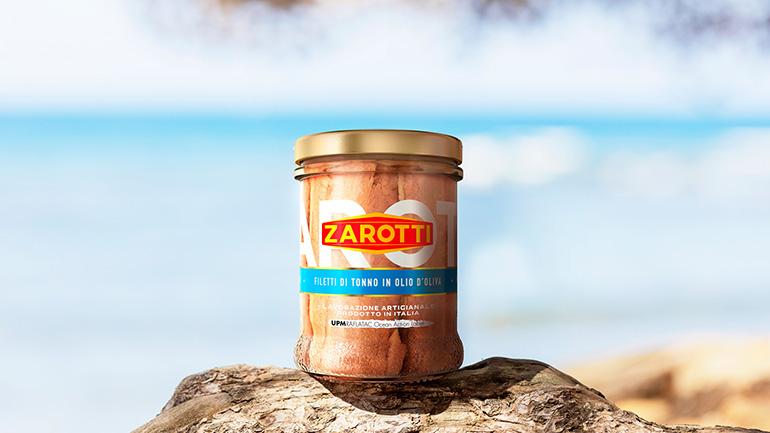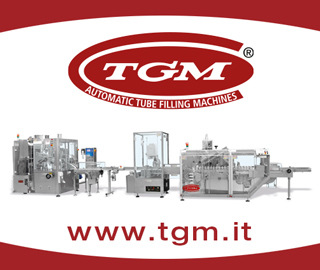Taghleef Industries, UPM Raflatac, SABIC, Zarotti | Best Packaging 2024
Pressure sensitive label with recycled polypropylene derived from
"ocean bound plastic" (OBP)
UPM Raflatac (label producer) - SABIC (raw material producers) - Zarotti (brand owner)
What is it. Pressure sensitive label produced using a polypropylene film (reLIFE™ rcLSA) derived from the chemical recycling of "ocean bound plastic" (OBP) and applied to glass jars of Zarotti tuna fillets in olive oil. Taghleef Industries (film producers that has registered the product), SABIC, and UPM Raflatac are ISCC PLUS certified and use mass balance to trace the raw material throughout the production chain.
Accessibility focus. The label falls into the category of "eco-design" (use of recovered/recycled material). Chemical recycling allows to give a second life to plastic waste, producing new raw material with identical quality to virgin plastic.
Manufacturing material. Polypropylene (PP) derived from the chemical recycling of OBP "ocean bound plastic". OBP is defined as all synthetic polymer waste found within 50 km of the seashore and which would therefore risk ending up in water and potentially be dangerous for the marine ecosystem.
Technology. Pressure sensitive label (PSL)
Product and potential markets. Films produced using raw materials obtained from the chemical recycling of post-consumer waste have the same properties and appearance as films made from virgin raw material. Being suitable for food contact, these films can replace any application in the entire range of BOPP films that Taghleef Industries is able to offer.
Sustainability. The label is produced using post-consumer waste, which could end up in the sea and represents a real problem, especially in countries with insufficient economic resources to invest in collection and recycling plants. To ensure the traceability of the recycled raw material, the companies involved in its processing have obtained ISCC PLUS certification and follow the mass balance approach. The use of chemical recycling allows to create new raw material from plastic waste that would otherwise be difficult or uneconomical to recycle. In addition to containing recycled material, the film is also recyclable.





















